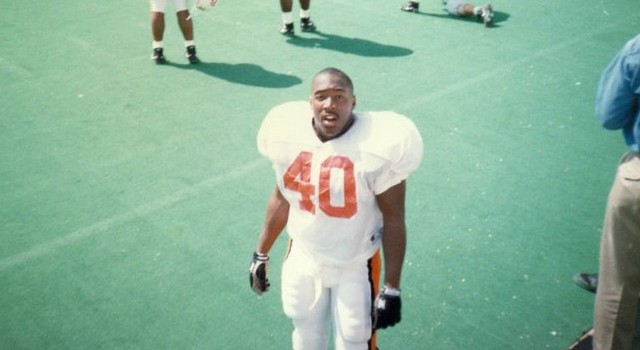What is journalism, and what isn’t journalism? That line, so distinct during the eras of newspapers being the main written news source, has considerably blurred since the advent of the internet and social media.
Back then, and to this day, newspapers and their reporters were held to guidelines, requirements, mandates if you will, when publishing an article, any article. These journalistic ‘commandments’ exist to protect all involved in the story, but most importantly protect the one thing that should, to this day, remain most important: the truth. Reporters who trained in journalism were and are professionals taking this requirement personally, striving for truth and accuracy.
But now, with the advent of the internet, blogs, social media, etc., do the same standards of journalism apply? Do all self-proclaimed ‘know-it-alls’ with no professional training provide journalistic services just because they have a wireless connection, a laptop with a keyboard, a smart phone, and something to say? Ideas and opinions thought up over breakfast or while watching a cable news network can be presented as journalistic stories without the same requirements for publication.
This isn’t to say all web-based reporting is inaccurate, unprofessional or substandard. To the contrary, many sports-focused sites produce incredible content with standards similar to the newspaper industry. But for every well-written, well-researched and well-documented story, there are several poorly written ‘articles’ with spelling and punctuation mistakes based solely on the authors’ speculations without foundation. Too often it’s hard to tell the difference.
So, what is the definition of journalism? And on what pillars does the journalistic industry stand? The definition of journalism is, according to Oxford Languages, the activity or profession of writing for newspapers, magazines, or news websites or preparing news to be broadcast. And Wikipedia describes journalism as the production and distribution of reports on the interaction of events, facts, ideas, and people that are the “news of the day” and that informs society to at least some degree of accuracy. The word, a noun, applies to the occupation (professional or not), the methods of gathering information, and the organizing literary styles.
Within the Wikipedia description are two somewhat concerning phrases: 1. To at least some degree of accuracy; and 2. Professional or not. These descriptions allow too much wiggle room for anyone to profess their writings as factual, legitimate works. And when the author sets his/her standard for publishing at the lowest end of accuracy, it can cause major disruption and complications, whether the focus is judicial, business, government, or sports. When judicial proceedings enter into the discussion, including sports-based stories, “at least some degree of accuracy” is not acceptable.
Accuracy and facts. Newsworthiness. Timeliness. Multiple sources. Editorial overview. Copy editing. The truth. The truth. The truth. These are the pillars of strong, professional reporting.
Was accuracy and the truth emphasized enough? Arriving at the truth within the newspaper business is based on verifying information provided by a source with confirmation of that information from a second legitimate source. Information must be provided by someone in connection with the topic, and the confirming source must likewise have knowledge and expertise in the topic. A confirming source should not be: the next-door-neighbor’s opinion; what someone read on another internet site; or the person’s own feelings about the event.
So what are the main types of journalistic articles, and do any allow for opinion in print? Articles can fall into four broad categories, which are: news, investigative, feature, and opinion/analysis. And yes one category does allow for opinions, but these Op/Ed (opinion/editorials) writings are packaged and presented differently so the reader can very quickly, visually understand he/she is reading a column based on opinion. Each of these four broad categories allow for sub-specialties and niches, such as business reporting, medical reporting, science reporting, etc.
News articles in sports are very easy to identify. Most often sports news stories are reporting the events and results of a particular game. All news stories, including sports, should be based on the 5 W’s: who, what, when, where and why. A well written news article should answer those 5 W’s early in the story, hopefully within the first one or two paragraphs. Currently, example of a sports news story is a Pirates baseball game; the Pirates played x team in Pittsburgh, scored three runs in the eighth inning and won by the score of x-x.
Investigative journalism has its place in sports as well, with very specialized investigative reporters working on stories behind the scenes of a topic, an organization or a league. These reporters and their stories are digging into the untold, clandestine stories not reported by a routine news reporter. For an example, ESPN.com has been publishing investigative articles about the ownership tenure of Dan Snyder, owner of the Washington Commanders (Redskins previously). Snyder is in the process of selling the team but has been in focus for in part running a toxic work environment within the organization’s administrative offices. Several other investigations have branched out of this investigation; most of these articles have several authors working together. Fact checking is of utmost importance here; no ‘at least some degree of accuracy’ will work in these stories.
Feature articles are just that, featuring a person/team/sport that had outstanding impact in a play, game, season, sport or career. Features can focus on players who made a game-saving tackle, a coach who has produced outstanding players and championships, an official who dedicated him/herself to a sport, an administrator who ran a league successfully, etc. These features dive more into the mechanisms of success, what motivated and inspired it. For example, ovathletics.com has begun a feature article series entitled “Local Legends.” The monthly feature article focuses on a person who has given him/herself to a sport or sports with long-standing, outstanding service and commitment.
Opinions/analysis are the only articles that should allow the writer’s opinion to influence the direction of the story. And it must be identified as such so the reader knows this is one person’s opinion, not a factual presentation. Now, opinion writers can use facts within the column to justify an opinion, but the premise of the article is to present an opinion on a topic. When reporting a news or investigative article, an opinion/analysis can join it as a separate article, but opinions should not trickle into the main, factual stories.
In the big cities with professional sports teams, multiple articles of differing types can be published out of the same game. Take Pittsburgh and the Steelers as an example; a metro newspaper could produce a news article covering the results of the game, a feature article covering a key play or player of the game, and an opinion/analysis column of why the game did or didn’t have the expected outcome.
Differing news outlets, whether local, regional, national or international, can choose to focus efforts on differing topics. Some may stay away from investigative news, and some may focus on strictly opinion-oriented material. Others may want to highlight local successes without digging into the negatives of athletics, even the negatives of youth or scholastic sports. For the reader, he/she is best served to know exactly what type of information the site provides before reading. Basing an opinion after reading the opinion of someone who has little to no knowledge on the topic may not be what the reader wants. And it certainly doesn’t serve the public well when consensus is based on disinformation.
Article courtesy of Howard Karnell

































Discussion about this post